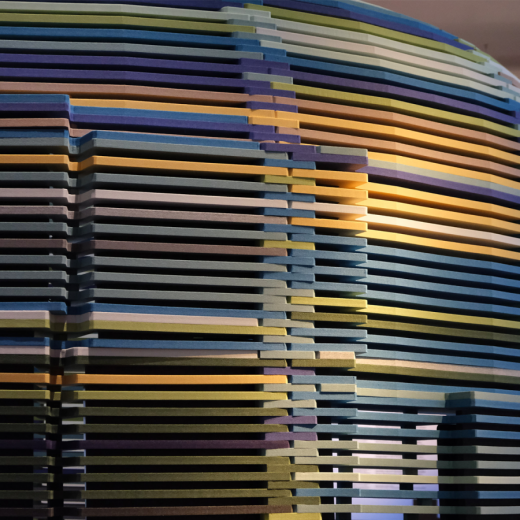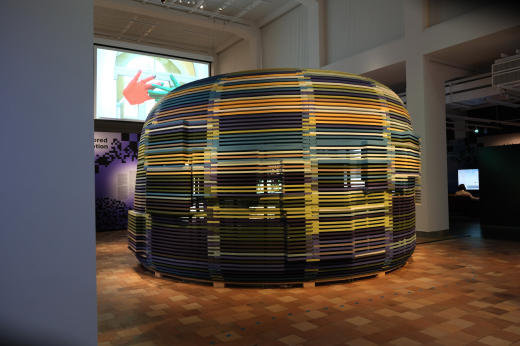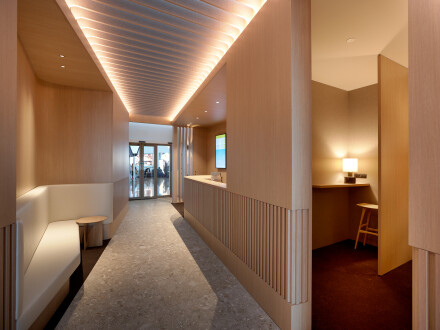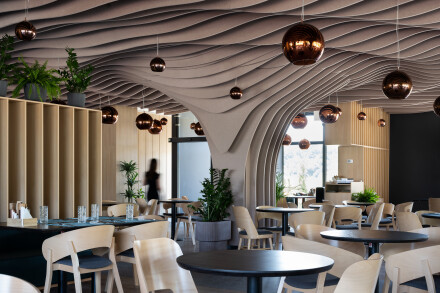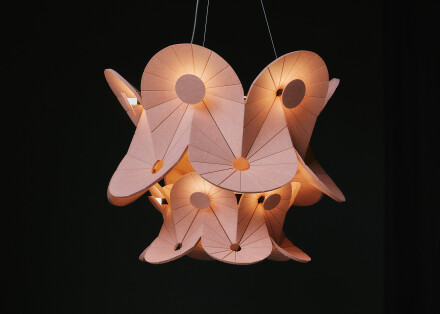Five questions for Dino Rossi, designer of the pavilion and Head of Computational Design at Impact Acoustic
What were the advantages of approaching this project with computational design instead of a traditional drawing?
The primary advantage was to be able to iteratively develop the design without directly remodeling the geometry each time. This allowed us to explore many variations in response to evolving design constraints throughout the process.
What were the considerations for the shape of the pavilion from a design point of view, but also from a material point of view?
The starting point of the geometry was the positioning of the screens, which relates to where the wildlife cameras were installed around the world. That combined with a general idea of how large the space should be and how it should feel. I think we pushed the ARCHISONIC® material about as far as it could go in terms of spans and cantilevers. In the final design there are over 1500 unique elements.
How did the choice of colours come about?
Computational design requires the designer to give up control of certain aspects of a design, something very foreign for many designers, but something that I really enjoy because you often end-up somewhere you didn’t expect. In this project I extended this idea of “letting go of control” to the final colour selection. The collection of colours were explicitly chosen, but the exact colour of each element was determined by a combination of the nesting algorithm and a shuffling panel colors during the cutting process.
Which parameters had to be considered for the design? Were there limiting factors that made the design difficult?
Initially the idea was a solid construction but evolved to a slated version in order to reduce material use. Visually this made the installation more interesting, but structurally it made it more challenging. Another aspect of the design that was challenging the wiring for the 21 synchronized screens. A branching path was integrated into the design which had to hide the wiring as much as possible, but also leave access for installation and maintenance.
How can the process for this project be transferred to other projects? Can conventional acoustic projects also be implemented with this computational approach, for example in office spaces?
One of the main reasons we wanted to use ARCHISONIC® was to create an acoustic cocoon for people viewing the installation so they could immerse themselves in the sounds of the videos in addition to the images. But the installation also acts as an acoustic absorber for the entire space. So, these types of forms can both create space and influence the acoustics of their surroundings, a win-win. At Impact Acoustic, we apply similar computer-aided design approaches to larger projects such as acoustic baffles, although under different conditions.

